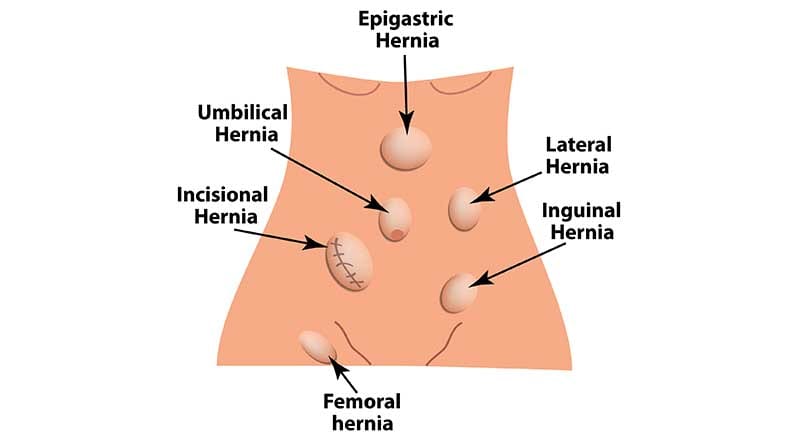

An inguinal hernia occurs when abdominal contents bulge through a place in the lower abdominal wall that is weakened.
In most cases, a small intestine part or fat is what bulges through. This hernia can cause pain, an obvious bulge, and pressure in the area. Several factors can cause this condition, such as bowel movement straining, chronic coughing, pregnancy or strenuous activity.
Laparoscopic surgery is a possible treatment option.
How Laparoscopic Differs from Open Surgery
Laparoscopic and open surgery are the two primary techniques to correct an inguinal hernia. Laparoscopic surgery to repair this hernia differs from open surgery in several ways, including:
- Instead of a large incision, laparoscopic surgery uses multiple small incisions
- General anesthesia is required for this technique
- If the patient has a hernia on both sides, the surgeon can repair them both at the same time using the laparoscopic technique


Patients Who Might Not be Good Candidates
Laparoscopic surgery to repair an inguinal hernia is not ideal for all people. Those with certain conditions or medical histories may need additional preparation before the surgery, or in some cases, they are not candidates at all and will need to consider open surgery. The following are circumstances that might disqualify patients from laparoscopic surgery:
- They have an incarcerated hernia
- They have idiopathic thrombocytopenic purpura, hemophilia, or another bleeding disorder
- They have had multiple abdominal surgeries in the past that might have caused scar tissue to develop
- They are pregnant
- They are unable to handle general anesthesia
- They are taking blood thinning medications
- They have emphysema or other severe lung diseases
What to Expect
The first step is administering general anesthesia to the patient. The surgeon will then make the proper incisions in the abdominal area. They will use laparoscopic technology to make the proper repairs to alleviate the hernia. If there is more than one hernia, they can often be repaired at the same time.
The procedure may take two hours or longer, depending on the extent of the surgery. In most cases, patients will go to recovery for a couple of hours and then be able to go home the same day.
Risks & Recovery
Most patients will recover in about four weeks. After four weeks, they can usual resume strenuous activities and exercise. However, many can go back to work after two weeks as long as their job is not highly physically demanding.
Like all surgeries, there are possible risks that all patients should be informed about, including:
- General anesthesia complications
- Damage to the epididymis
- Bladder injury or urinary retention
- Formation of scar tissue
- Pain or numbness in the upper leg
- Hernia recurrence
- Scrotal hematomas or seromas
Patients should work with their doctor to ensure that they are prepared for the procedure. Follow all recovery instructions to help reduce the risk of complications.

